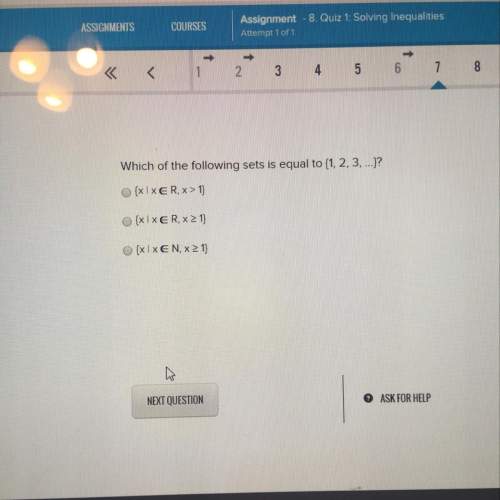Given: g ∥ h and ∠2 ≅ ∠3
Prove: e ∥ f
Horizontal and parallel lines e and f are in...

Mathematics, 19.03.2020 10:33 SESDMANS9698
Given: g ∥ h and ∠2 ≅ ∠3
Prove: e ∥ f
Horizontal and parallel lines e and f are intersected by diagonal and parallel lines g and h. At the intersection of lines g and e, the bottom right angle is angle 2. At the intersection of lines h and e, the bottom right angle is angle 1. At the intersection of lines f and h, the top left angle is angle 3.
Statements Reasons
1. g || h 1. given
2. ∠1 ≅ ∠2 2. corresponding angles theorm
3. ∠2 ≅ ∠3 3. given
4. ∠1 ≅ ∠3 4. transitive property
5. e || f 5. ?
What is the missing reason in the proof?
vertical angles theorem
alternate exterior angles theorem
converse corresponding angles theorem
converse alternate interior angles theorem

Answers: 3


Other questions on the subject: Mathematics

Mathematics, 21.06.2019 17:30, cecelia090
Any is very appreciated! (picture is provided below)not sure how to do this at all won't lie
Answers: 1

Mathematics, 21.06.2019 18:00, carnations
Does anyone know how to do geometryme with this problem
Answers: 1

You know the right answer?
Questions in other subjects:

Mathematics, 12.10.2019 12:10

Mathematics, 12.10.2019 12:10



Mathematics, 12.10.2019 12:10



Mathematics, 12.10.2019 12:10

Health, 12.10.2019 12:10




